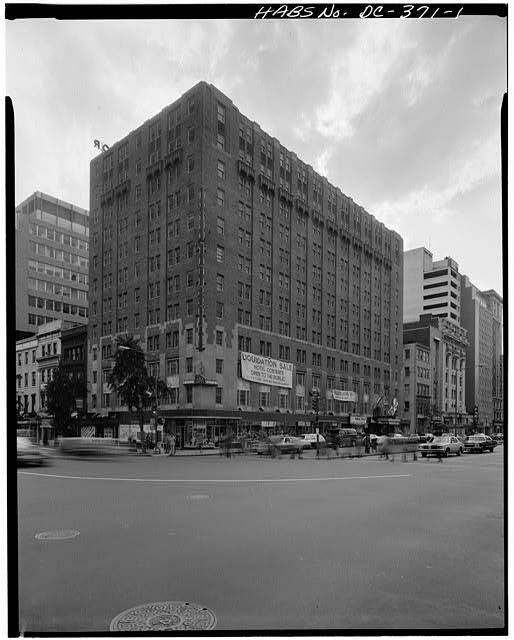Ambassador
Known Name(s)
Ambassador
Address
Fourteenth & K St. Washington, DC (Primary) (1963, 1964, 1966) ,
Establishment Type(s)
Hotel
Physical Status
Demolished
Description
Designed by D.C. architect Harvey H. Warwick (1893-1972) and completed in 1929, the new hotel was faced in burnt-orange pressed brick with Indiana limestone trim. The building was twelve-stories tall with a pool and early gymnasium built as part of the 1929 construction.
Detailed History
The Ambassador Hotel, located on the southwest corner of 14th and K Streets NW across from Franklin Square, was a showcase of modern amenities and conveniences when it opened in September 1929. It was the work of successful D.C. developer Morris Cafritz (1890-1964), who lived at the hotel for a number of years and had his offices there. An important and distinctive DC landmark, the Ambassador nevertheless didn’t aim for the heights of refinement and elegance embodied in, say, the Willard or the Mayflower. Instead it was designed for the common man, advertising itself as the “stopping place of experienced travelers.”
Cafritz announced plans in 1928 for a $3 million 500-room hotel at 14th and K Streets NW, where he previously kept his offices. The new hostelry would include amenities such as a swimming pool, gym, and roof garden. Eight stores were slated to open at street level. Most significantly, according to the Washington Post, the trendy new hotel was to be “the first hotel in Washington equipped with a radio loud speaker in every room and one of the first hostelries in the country in which radio will be part of the customary service without extra charge.” Sources John DeFerrari, Streets of Washington, Jack Lait and Lee Mortimer, Washington Confidential: The Lowdown on The Big Town (1951); Burt Solomon, The Washington Century: Three Families and the Shaping of the Nation’s Capital (2004), and numerous newspaper articles.
By the early 1960s, hotels began to welcome African Americans. The Ambassador Hotel stood at 1412 K St. NW. Photos of the building have been included in the Historic American Building Survey under HABS DC-371 with photos by Walter Smalling taken in October 1978.




